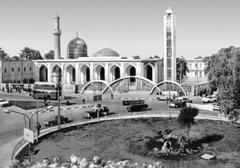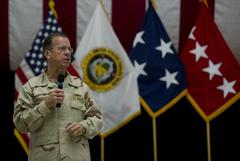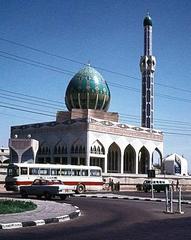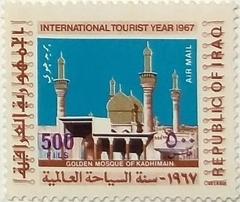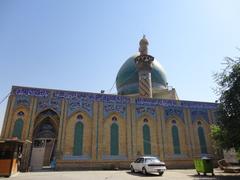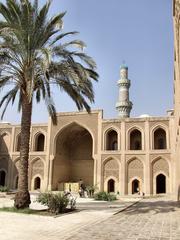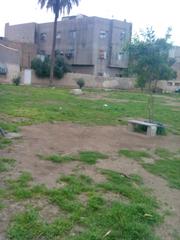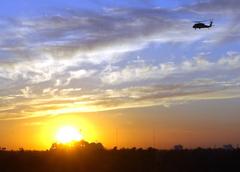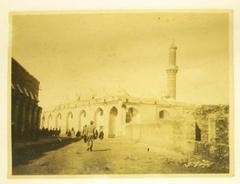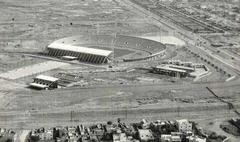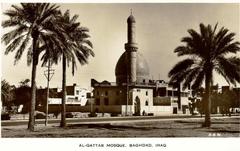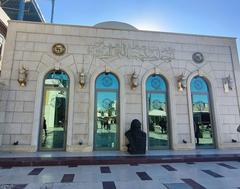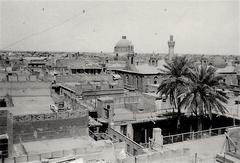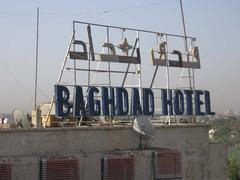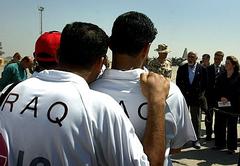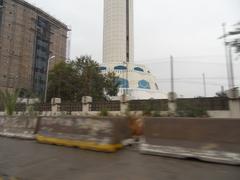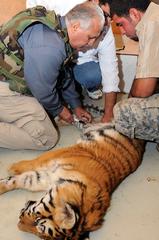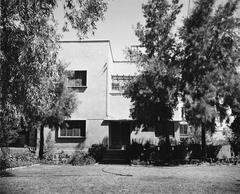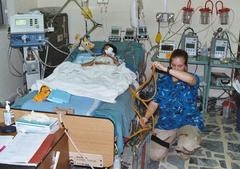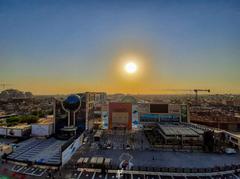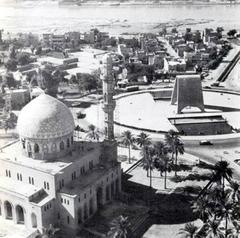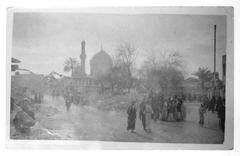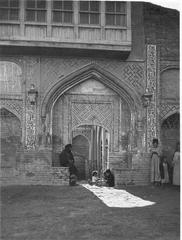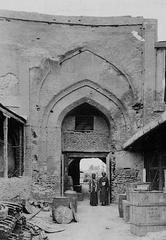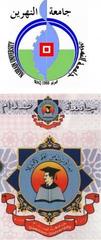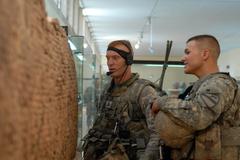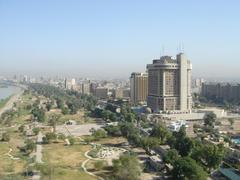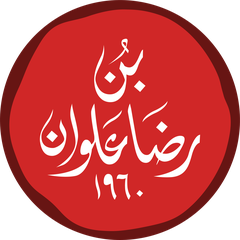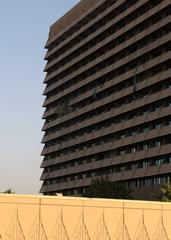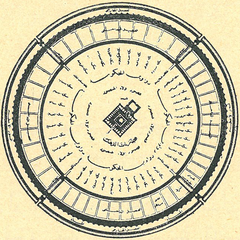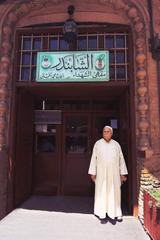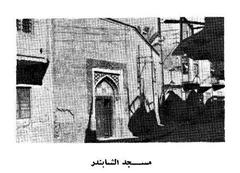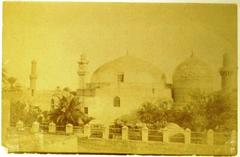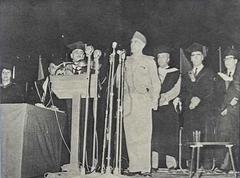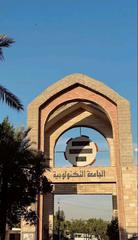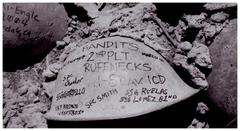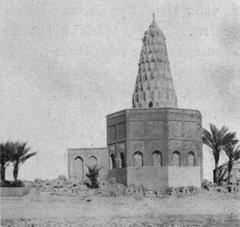Iraqi University Visiting Hours, Tickets, and Historical Sites Guide in Baghdad, Iraq
Date: 14/06/2025
Introduction
The University of Baghdad, established in 1957, is Iraq’s largest and most prestigious higher education institution. Deeply connected to the nation’s intellectual, cultural, and architectural heritage, the university was founded during a period of national modernization, aiming to cultivate future generations of scholars and contribute to Iraq’s progress. Its campus is a notable architectural landmark, featuring a pioneering modernist design by Walter Gropius and The Architects Collaborative, which integrates regional elements with modern ideals along the scenic banks of the Tigris River (archnet.org; postwarcampus.wordpress.ncsu.edu).
Despite enduring decades of political upheaval, sanctions, and conflict, the University of Baghdad remains a resilient symbol of Iraq’s dedication to education. Today, it continues to play a vital role in the country’s academic and cultural life, welcoming visitors to experience its rich history, architectural beauty, and vibrant campus environment.
This guide provides comprehensive information for visitors—including practical details on visiting hours, tickets, accessibility, travel tips, nearby attractions, and cultural highlights—to help you make the most of your trip to this emblematic institution in the heart of Baghdad.
Contents
- Introduction
- Historical Overview
- Founding and Early Vision
- Architectural Ambitions and International Collaboration
- Growth and Golden Era
- Political Upheaval and Recent Challenges
- Cultural and Social Significance
- Visiting the University of Baghdad
- Visiting Hours
- Entry, Tickets, and Guided Tours
- Accessibility
- Travel Tips
- Photography
- Facilities and Amenities
- Getting There and Safety
- Nearby Attractions
- Frequently Asked Questions (FAQ)
- Conclusion
- References
Historical Overview
Founding and Early Vision
The University of Baghdad was founded in 1957 as part of Iraq’s vision to build a modern educational hub and foster scientific advancement (archnet.org). Its establishment marked an important step in Iraq’s efforts to create a new generation of scholars contributing to national development (postwarcampus.wordpress.ncsu.edu).
Architectural Ambitions and International Collaboration
In 1957, Walter Gropius and The Architects Collaborative (TAC) were commissioned to design the main campus. The campus master plan embodied modernist ideals while integrating regional traditions—features such as the library-centric layout, brise soleil shading, courtyards with water features, and lush landscaping with native trees. Although political instability limited the full realization of Gropius’ vision, the completed elements set a benchmark for modern architectural design in the region (postwarcampus.wordpress.ncsu.edu).
Growth and Golden Era
Fueled by oil revenues in the 1960s and 1970s, the university expanded rapidly, becoming a regional leader in arts, sciences, medicine, and technology. It gained international recognition and fostered innovation through collaboration with institutions like the Iraqi Academy of Sciences (files.ethz.ch).
Political Upheaval and Recent Challenges
The rise of the Ba’ath Party and subsequent decades of political turmoil led to increased politicization and strained resources (peacerep.org). Sanctions in the 1990s and the 2003 Iraq War caused significant damage, forced academic exiles, and challenged infrastructure (generisonline.com; files.ethz.ch). Despite these hardships, the university remains a symbol of Iraq’s commitment to education and recovery.
Cultural and Social Significance
The University of Baghdad’s riverside campus is not only an educational hub but also a cultural landmark, reflecting Iraq’s aspirations for modernity and progress (archnet.org). It serves as a platform for dialogue, social change, and intellectual exchange, with ongoing initiatives to reconnect with the global academic community (en.uobaghdad.edu.iq).
Visiting the University of Baghdad
Visiting Hours
- General Campus Access: 8:00 AM to 5:00 PM, Sunday through Thursday (University of Baghdad Official Website)
- Museum Hours: The Natural History Research Center and Museum typically opens from 9:00 AM to 4:00 PM, Sunday through Thursday (en.nhm.uobaghdad.edu.iq)
- Note: Visiting hours may vary during public holidays or university events. Always confirm before your visit.
Entry, Tickets, and Guided Tours
- Entry: Free for general campus visits; valid identification (passport or national ID) is required at security checkpoints.
- Guided Tours: Available by prior arrangement through the university’s visitor services or museum; offered in Arabic and English.
- Museum Tickets: Some museums or exhibitions may require a small ticket fee (typically 500–1,000 Iraqi Dinars).
Accessibility
- Mobility: The campus is pedestrian-friendly, with ramps and elevators in newer buildings. However, some older structures may have limited accessibility.
- Assistance: Visitors with specific accessibility needs should contact the university in advance to arrange accommodations.
Travel Tips
- Dress Code: Modest attire is required; men should wear long trousers and shirts, and women should cover arms and legs. Headscarves are optional but appreciated in religious settings.
- Language: Arabic is the primary language, but English is commonly spoken in academic and visitor contexts.
- Security: Expect routine security checks. Always carry identification.
- Local Customs: Respect cultural sensitivities, especially during religious events like Ramadan.
Photography
- Permitted: In public outdoor areas, architectural features, and gardens.
- Restrictions: Avoid photographing security personnel, checkpoints, or sensitive areas. Seek permission before photographing individuals.
Facilities and Amenities
- Cafeterias and Food Outlets: Available on campus, serving local cuisine and beverages.
- Restrooms: Present in most buildings; carrying tissues and sanitizer is recommended.
- Libraries: Accessible to academic visitors by appointment.
- Wi-Fi: Limited; mainly for students and staff. Mobile data is reliable.
Getting There and Safety
Location and Transportation
- Address: Al Jadriya, central Baghdad, along the Tigris River.
- Transportation: Accessible by taxi or private car; public transport is limited for visitors. Arrange transfers via hotels or reliable car services.
- Airport: Baghdad International Airport lies 30–45 minutes away by car.
Safety and Security
- Campus: Security-controlled entry points; visitors must comply with all protocols (TravelSafe-Abroad).
- General Advice: Register your travel with your embassy, purchase comprehensive travel insurance, and consider traveling with a local guide. Remain informed about local conditions and avoid sensitive areas or discussions (Against the Compass).
Nearby Attractions
While visiting the university, consider exploring these cultural and historical sites in Baghdad:
- National Museum of Iraq: Renowned for its Mesopotamian artifacts.
- Al-Mutanabbi Street: Famous for booksellers and literary culture.
- Martyrs Monument: A significant national landmark.
- Mustansiriya Madrasa: Among the oldest universities worldwide.
- Abu Hanifa Mosque: A key religious site in the Adhamiyah district.
Guided tours to these sites can often be arranged through local agencies or hotels.
Frequently Asked Questions (FAQ)
Q: What are the University of Baghdad’s visiting hours?
A: 8:00 AM to 5:00 PM, Sunday through Thursday; museums may operate 9:00 AM to 4:00 PM.
Q: Is there an entrance fee?
A: General campus access is free; some museums or exhibitions may require a small ticket fee.
Q: Can visitors arrange guided tours?
A: Yes, tours can be booked in advance through visitor services or the museum.
Q: Is the campus accessible for people with disabilities?
A: Newer buildings feature ramps and elevators; advance arrangements are advised for specific needs.
Q: Can I take photographs on campus?
A: Yes, in public areas. Avoid photographing security zones or individuals without permission.
Q: Are there facilities for refreshments and restrooms?
A: Yes, cafeterias and restrooms are available throughout the campus.
Conclusion
The University of Baghdad is not only a center of learning but also a living testament to Iraq’s resilience, aspirations, and cultural richness. From its visionary founding and modernist architecture to its vibrant academic life and proximity to Baghdad’s historic treasures, the university offers a rewarding experience for visitors. With careful planning, respect for local customs, and adherence to safety protocols, your visit to the University of Baghdad can be both enlightening and memorable.
For updated visitor information, event schedules, and travel tips, consult the university’s official website and reputable travel resources. Enhance your experience by using tools like the Audiala app and following university social media channels.
References
- University of Baghdad: Visiting Hours, Historical Overview, and Visitor Information, 2023, Archnet
- Walter Gropius and The Architects Collaborative – University of Baghdad, 2018, Postwar Campus Blog
- Higher Education in Iraq After 2003, 2023, Peace Research Institute
- An Overview of the Education System in Iraq, 2023, Generis Online
- Natural History Research Center and Museum, University of Baghdad Official Website
- University of Baghdad Official Website
- TravelSafe-Abroad: Baghdad, 2024
- Against the Compass: Is it Safe to Travel to Iraq?, 2023
- UniversityGuru: Iraqi Universities
